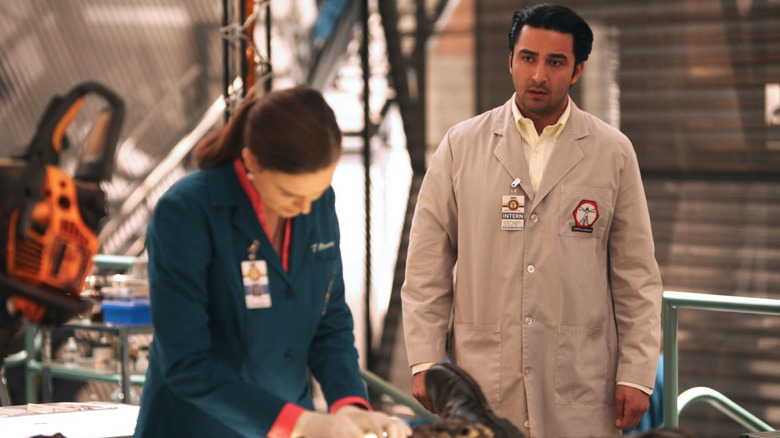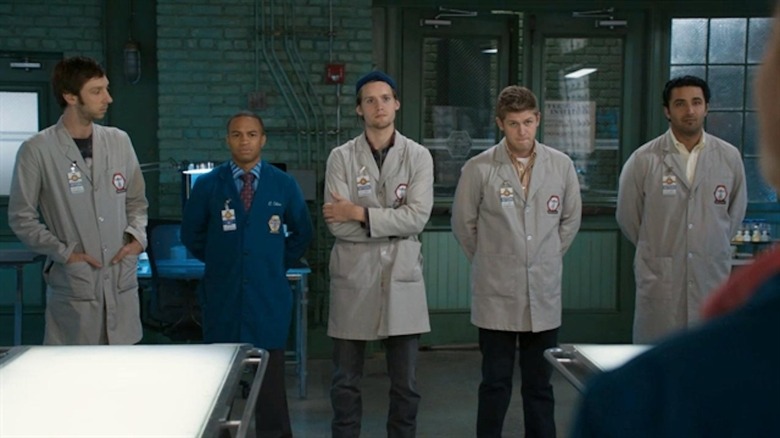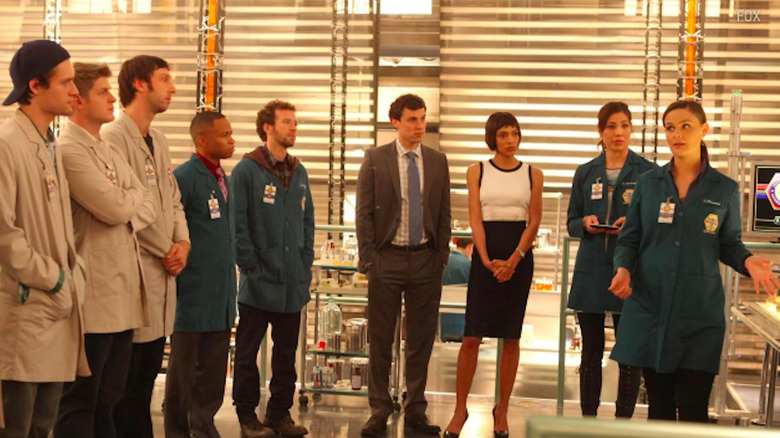How Bones' Creators Benefitted From Social Media
When Hart Hanson's "Bones" premiered on FOX at the outset of the 2005-06 television season, the home entertainment world was a dramatically different place than it is now. The vast majority of TV viewers still looked to the big four networks for small-screen escapism (and most people's screens were, on average, actually small back then), while word-of-mouth buzz was still a fickle thing that spread around the proverbial water cooler or in social circles outside of work. The internet was a valuable tool — everyone either had a blog or knew somebody with one — and an increasing number of folks were starting to get addicted to their Blackberry screens (the term "Crackberry" began to spring up around this time), but we weren't completely buried in our screens.
And, for folks over the age of 30 (or simply not heavily online), social media looked like a passing fad.
Three years later, Facebook and Twitter started to blow up, and it didn't take long for them to become essential elements of our everyday lives. Curiously, that social media upsurge coincided with "Bones" making the leap from a cult procedural to a reliable ratings performer for FOX. Between 2008 and 2012, the Jeffersonian Institute's idiosyncratic crime-solving exploits were being watched by over 10 million people per episode. And while the crackling chemistry between series leads Emily Deschanel (Temperance "Bones" Brennan) and David Boreanaz (FBI Agent Seeley Booth) was a major draw, the show also owed its broadening appeal to its colorful stable of supporting characters.
Indeed, viewers quickly became fans of the series' rotating cast of "squinterns" –- i.e. the eager-beaver assistants who chip in on cases because the Jeffersonian couldn't afford high-paid expert colleagues for Bones and Booth.
Determining the squintern hierarchy on Bones
Of course, not all squinterns were created equal. Some popped more than others (e.g. Clark Edison, Daisy Wick and Arastoo Vaziri proved popular enough early-ish in the series' run that Hanson kept them around until the final season). And when it came to fans stating their squintern preferences, social media was a valuable platform for the "Bones" creative team.
In an interview with TV Insider prior to the series finale, Hanson discussed the squintern phenomenon and how FOX took a hands-off approach to determining which characters/actors to keep around. According to Hanson:
"They were up for it as we explained what it did. I'm still shocked by how many of them we were able to bring back. It became a bit of a chestnut of who had availability, because we didn't have any of them exclusively. I don't recall us getting a lot of pushback on that after the network realized that the audience had their favorites, too."
Monitoring the squintern skirmishes among Bones fans on social media
Hanson and his writers weren't beholden to the audience's whims (as fans quickly learned after the surprise, not-quite-permanent exit of Eric Millegan's Zack Addy after season 3). In fact, they were happy when viewers quarreled over their favorite squinterns because this meant people were deeply engaged in the show's episode-to-episode progression. Per Hanson:
"Social media was a very good sales tool for us, because we could point to our loud, wonderful audience on social media who would argue about who they liked most and who they wanted to come back. The minute people are doing that, you can see it's a good element in the show. It raised interest in the show. You rolled the dice and it worked, thanks to those incredibly good actors."
"Bones" did eventually run out of gas (perhaps we can blame Betty White for this), but that fan base remained committed to the series until the conclusion of its 12th and final season in 2017. That's a tremendous run, and it wouldn't have happened were it not for those kinda weird, but always fascinating squinterns.


